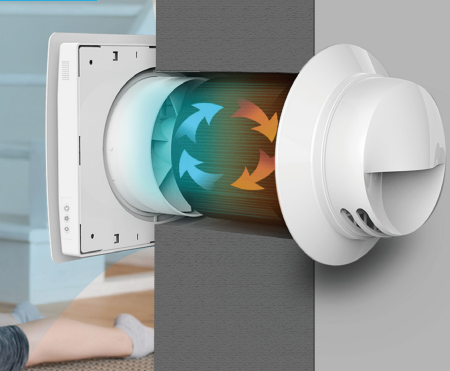The All-Inclusive Overview to the Uses of Heat Recovery Ventilation in Modern Buildings
Heat Recovery Ventilation (HRV) systems stand for a significant development in developing technology (HRV Heat Recovery Ventilation). They supply an approach for exchanging stale indoor air with fresh outdoor air while minimizing power loss. This technique not only boosts interior air high quality but likewise adds to energy efficiency in both property and business structures. Recognizing the different applications and advantages of HRV can expose its crucial function in modern design and sustainability efforts. The ramifications of this technology are worth discovering further
Recognizing Heat Recovery Ventilation Systems

Lots of contemporary structures focus on energy performance, comprehending warm recuperation air flow (HRV) systems is vital for optimizing interior air high quality and decreasing power intake. HRV systems function by moving warmth from stale interior air to incoming fresh air, properly maintaining comfy interior temperatures while minimizing energy loss. These systems consist of a warmth exchanger, followers, and ductwork that assist in the blood circulation of air. Throughout winter, HRV devices catch and reuse warmth from the outgoing air, while in summer season, they can assist cool down incoming air. By continually trading air, HRV systems additionally decrease moisture and the concentration of indoor pollutants. Appropriate installation and upkeep of HRV systems are necessary for their effectiveness and effectiveness in improving overall structure efficiency and convenience.
Benefits of Heat Recovery Ventilation
Heat recovery ventilation systems offer various advantages that boost both power effectiveness and interior air high quality in modern buildings. By catching and reusing power from exhaust air, these systems greatly lower heating & cooling costs, causing lower energy consumption. Additionally, they maintain a stable circulation of fresh outside air, decreasing the danger of indoor air toxins and irritants. This constant exchange helps manage moisture degrees, protecting against mold development and guaranteeing a healthier living setting. Additionally, HRV systems add to sustainability objectives by decreasing overall carbon impacts. Their capacity to optimize air flow without giving up thermal convenience makes them an important addition to contemporary building layout, promoting both economic and ecological benefits.
Applications of HRV in Residential Buildings
As property owners significantly focus on energy performance and indoor air quality, the applications of warmth healing air flow (HRV) systems in property structures have actually come to be extra widespread. HRV systems are particularly valuable in securely sealed homes, where preserving fresh air circulation is essential for avoiding moisture accumulation and indoor contaminants. They effectively move heat from outbound stagnant air to inbound fresh air, lowering energy costs related to heating and air conditioning. In addition, HRVs can improve comfort degrees by regulating humidity and temperature. They are likewise adaptable for different household styles, consisting of single-family homes and multi-unit structures. On the whole, integrating HRV systems sustains lasting living practices while guaranteeing a much healthier indoor atmosphere for passengers.
HRV in Business and Industrial Settings
In industrial and commercial settings, the application of warm healing ventilation (HRV) systems has become increasingly crucial for enhancing energy efficiency and keeping air quality. These systems effectively move warm from exhaust air to incoming fresh air, lowering the need for added home heating or cooling. This not only decreases energy expenses yet also adds to sustainability efforts. Industries such as manufacturing, warehousing, and office buildings profit substantially from HRV systems, as they assist manage temperature level and moisture degrees, guaranteeing a comfortable and effective atmosphere. HRV systems aid in eliminating contaminants and excess dampness, enhancing indoor air high quality. As laws around air top quality come to be more stringent, the fostering of my sources HRV technology is likely to grow, making it a vital part of contemporary commercial and industrial infrastructure.
Future Trends in Heat Recovery Ventilation Innovation

Frequently Asked Inquiries
How Does Heat Recovery Ventilation Influence Indoor Air High Quality?
Heat recovery ventilation considerably enhances indoor air high quality by constantly trading stale indoor air with fresh exterior air while recouping energy. This procedure reduces pollutants, preserves ideal moisture degrees, and guarantees a healthier atmosphere for owners.
Can HRV Equipments Be Mounted in Existing Buildings?
HRV systems can undoubtedly be installed in existing important source buildings. Retrofitting may need modifications to ductwork and air flow designs, yet it significantly boosts power performance and interior air quality, making it a practical option for older structures.
What Upkeep Is Needed for HRV Equipments?

Are There Details Climates Where HRV Is More Reliable?
Heat recovery ventilation systems are especially reliable in climates with significant temperature level distinctions in between periods. These systems optimize energy performance by recuperating warm from exhaust air, making them perfect for both cool and moderately cozy atmospheres.
How Do HRV Systems Affect Energy Bills?
